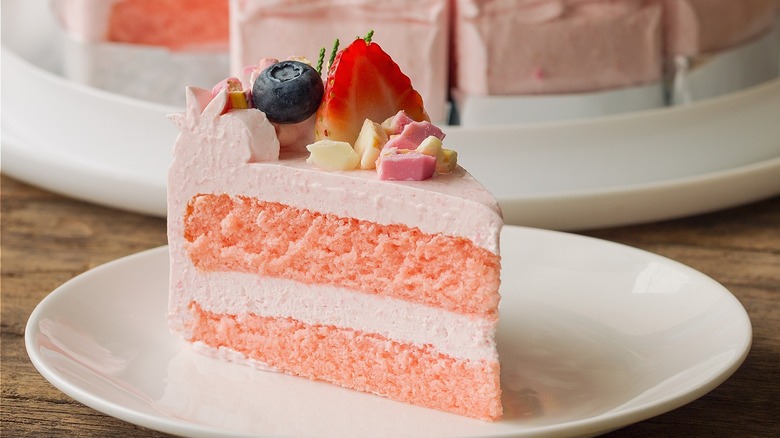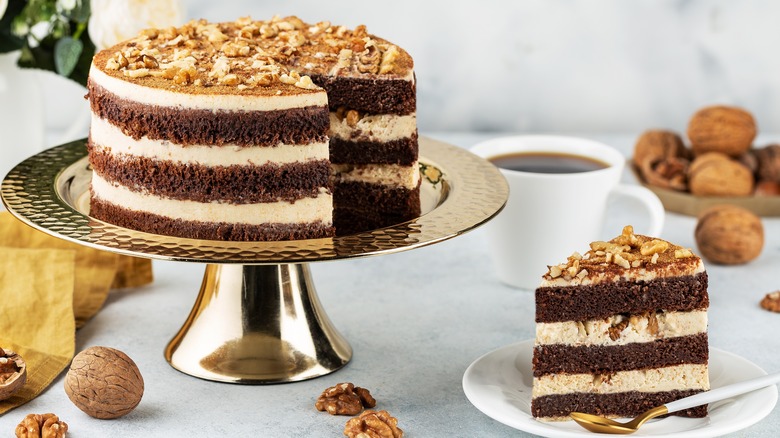A Single Plate Is Your Secret Weapon For Perfectly Even Cake Layers
The process of baking a cake from scratch is perhaps too often underestimated. It requires versatile hands, some amount of mathematics, and a decent helping of patience, as well as advanced culinary knowledge (or just pure, brazen luck) to pull off an optimal bake.
There are plenty of opportunities to make mistakes while cake baking, and as you advance through the increasingly tough tasks of cake creation challenges you will eventually reach one of the ultimate levels: making a cake with multiple layers. It doesn't have to be a ridiculously extravagant wedding cake — any sort of tiered cake requires a whole different kind of confidence and technique.
So, how can you achieve it? With great difficulty, usually. However, friendly cake bakers are prepared to share some of the expert hints and tricks they have developed over time, meaning it's now much easier for even novice bakers to produce tiered cakes with satisfying balanced layers. One method is particularly straightforward, requiring nothing more complicated than a plate.
You don't need complicated tech for level cake layers
Fortunately, disorganized cake layers can be avoided without the need for some ludicrously complicated laser-guided computer system. According to Epicurious, one of the best measures involves using a plate.
First, forget about using cake tins — pouring cake batter onto a normal, rectangular baking tray works best because you can then place an upside-down plate on top of the mixture and carefully cut out as many circular layers as you need (feel free to use more than one tray if you have that much batter). In addition to having effortlessly round cake layers of the same size, the method also gives you the freedom to experiment with different shapes, and leaves you with extra cake mixture for decoration (or a cheeky snack).
To ensure the cake layers stay flat during baking, Completely Delicious recommends weighing all of the layers to make sure they contain the same quantity of batter, as well as cutting the oven temperature by 25 degrees (and extending the recommended baking time by half) to reduce the chance of domes forming in the center of the layers. Additionally, once the layers are baked they should be refrigerated overnight to allow them to solidify, making them less likely to fall apart when the cake is assembled and decorated.

